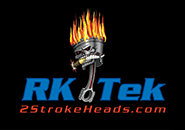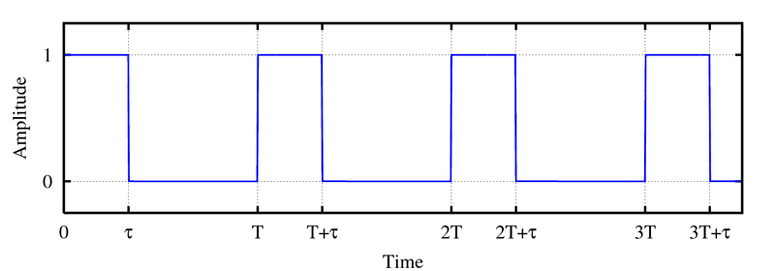|
FUEL CONTROLLER MYTHS
|
DOES YOUR FUEL INJECTED SLED REALLY NEED A FUEL CONTROLLER? ARE THE PRE-PROGRAMMED CONTROLLERS OFFERED REALLY RIGHT FOR YOUR ENGINE? |
|
You always hear how you can get a pre-programmed fuel control box for your Cat or Polaris and it will be set up to work perfectly with YOUR engine! Is this really the case? Are ALL engines the same and, therefore; require the same fueling requirements? Is this pre-programmed (1 size fits all type) controller really allowing to you extract the full power potential from the expensive "kit" you just spent your hard earned money purchasing?
OK, let's look at these questions in a little more detail.. First, it would be wise to get a few facts straight about fuel flow in these throttle body injected power-plants we love so much.. 1) Injectors operate on what is called a "Duty Cycle". What does this mean? A Duty Cycle is the fraction of time that a device (in this case your fuel injector) is in an "ACTIVE" state. The injector is fed a square wave pulse (see below for a sample of a square wave pulse) When the amplitude is at a "1" ,the injector is active and will open and flow the fuel that is present in the fuel rail and pumped from your fuel tank via the electric fuel pump. This fuel is INJECTED via the injector to your engine. This is why they call it "Fuel Injected". When the amplitude is at a "0", the injector will close its orifice and fuel flow will stop traveling from your tank through the injector to your engine. This square wave signal is not necessarily "even" in its "on" and "off" times. Meaning, the square wave will not give equal "on" time and "off" time to the injector. The amount of "on" time is directly controlled by your engine's electronic brain box. 2) The longer the amplitude stays at "1" the longer and more fuel that will be injected to your engine. The reverse is true as well. Aftermarket fuel controllers, alter this square wave. The injector pulse (Square Wave) is fed to the controller and the controller will adjust its duty cycle based on the controller's programming. This is how you add or subtract fuel to your engine. NOTE: there are only 2 controllers that can removed fuel from your engine. ALL can add more fuel but only 2 can subtract it. 3) The pressure present in the fuel lines will DIRECTLY effect the amount of fuel that will be injected when the injector is "on". The higher the fuel pressure, the more fuel that will be injected when the injector is turned on. Conversely, the lower the fuel pump pressure, the LESS amount of fuel will be injected when the injector is turned on. So, you see, that the amount of fuel that is delivered, via injector, to your engine, is NOT just related to your injector pulse duty cycle, but is also directly related to the line pressure. There is a very good calculator and description of this located at: http://www.rceng.com/technical.aspx You can play with numbers and see directly how the fuel flow is altered. VERY good article, play with the fuel flow calculator. Please check it out! _________ OK, now, you have a good understanding of how the fuel gets from your tank to the engine on a throttle body injected system. Now ask yourself: "Are ALL fuel pumps outputting the SAME pressure?" Are ALL fuel rail regulators outputting the SAME? Answer: "ABSOLUTELY NOT!" We KNOW that the fuel pump and rail pressure directly effects the amount of fuel flow through your injectors and we KNOW that all fuel pressures WILL vary between sleds. Please ask yourself: "How can there be ONE Fuel Control Box setting for, say ALL M8 sleds? All M10's? All Polaris 800's? etc. etc. Answer: "There Can't!" WHY? Because there is NO WAY to KNOW the fuel flow of each and every sled. WHY? Because the fuel pressures vary! It is really that simple! There are MANY performance enhancement kits available that require a fuel controller to allow for better fuel flow. These kits are supplied with a fuel controller that has pre-programmed fuel maps that optimize the kit. These controllers are non-adjustable (one size fits all of the same models) and are said to be adjusted , just right , to maximize the performance enhancement kit that they are selling. Hmmm.. how can this be? Is the fuel flow of your injectors known? Is it the same for all engines? Is your fuel pump's output pressure known? Is it the same for all fuel pumps? Are ALL regulators at the same level? Well.. since there are variances in the pressures, it stands to reason, that there will need to be variances in the fuel controller's settings as well. So, what happens when you purchase a power enhancement kit with a non-adjustable fuel controller? Are you getting the FULL enhancement from the kit you just laid down your hard earned $$$ to purchase? OR are you only getting a percentage of the power that is really available due to the fuel controller's settings NOT be optimized for your engine? Please ask yourself this question. What happens is that the "kit" suppliers will pre-program the fuel controller for the lowest fuel pressure they have seen. In this manner it will be safe for all engines. What it will NOT be is optimum for all engines. Since this programming is based around the "exception" and not the "norm" if your engine falls in the "norm" category (like most do) you will have a controller that is OVER-FUELING your engine. While this will be "safe" , it will not produce the best power. You could be seriously down on power (even lower than stock power outputs) because of this over-fueling scenario. In conclusion... It is nearly impossible to have a pre-programmed fuel controller that is OPTIMUM for your engine. There are simply WAY too many variables (fuel pump pressure, rail pressures, exhaust, riding elevation, head, temperature etc. etc) that factor when programming ANY fuel controller. Having said all that, fuel controllers are a great thing.... They allow you to TUNE your engine for optimum power output! The "key" word here is "tune" you must be able to tune your controller or you could be missing out on a lot of hidden power simply because you are over-fueling your engine. Fuel controllers are very easy to tune and one should NOT shy away from running them. I am sure you have all witnessed or even owned a "Stock" sled that simply performs above other stock sleds (and even some mod sleds). This "Super- Stock" sled's superior performance can usually be traced to a better (more accurate) fuel supply. The proper fueling of ANY engine is critical in determining the power output.. Too much.. low power, too little.. low power and low life... just right.. great power and long life. So, while you may feel more confident purchasing a "kit" that has a "hands off", "Set to go" advertisement surrounding it. Keep in mind, it may be "hands off" but it will rarely be "optimum" and , after-all, you purchased the kit to extract more power and be optimum. Why not get it?
|
Website updated by Urban Plains Web Design


